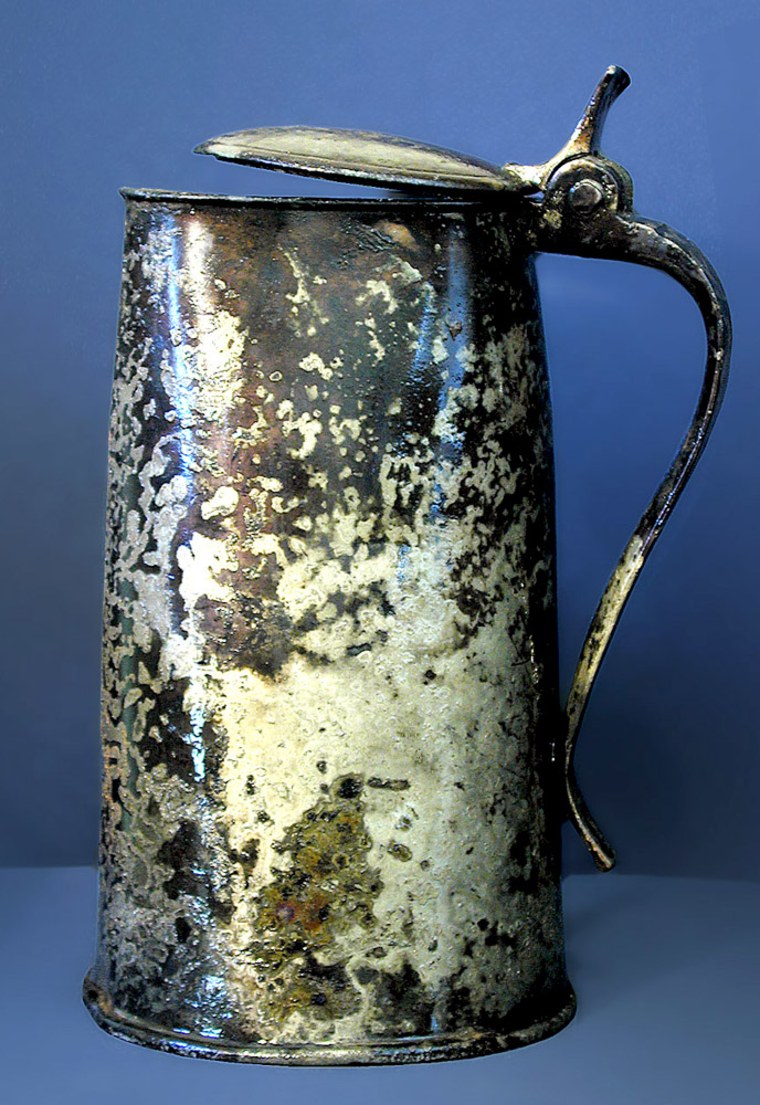Artifacts found in the remains of a 17th-century well, including farm tools and a pewter flagon, provide glimpses into the early life of the pioneering Jamestown settlement and its struggles for survival, archaeologists said Monday.
The well, built as early as 1617, is likely the oldest of two dozen wells discovered at the first permanent English settlement in North America, now part of the Historic Jamestowne preserve. Since it was found in the summer of 2002 it has yielded a treasure trove of artifacts ranging from armor plates to drinking vessels likely dropped by accident, the archaeologists said.
A pewter flagon, which dates to sometime before 1620 and bears the initials P, R and E on its thumbrest, may have belonged to Richard and Elizabeth Pierce, who arrived at Jamestown aboard the ship Neptune in 1618, they said.

The couple lived on an outlying plantation during a massacre in 1622 when Powhatan Indians killed nearly 350 settlers. They may have lost the drinking vessel in the well when surviving colonists were told to return to Jamestown for protection.
"We know that after the attack they are listed as living in a different area than they were before the attack," said Bly Straube, an archaeologist and curator of the Jamestown Rediscovery archaeology project.
"So because there was this movement of people from the affected area into fortified areas, we suspect the Pierces did come to Jamestown, where they lived a short while until the areas outside were secured," Straube said in a telephone interview.
Rare breastplate
Three feet (1 meter) below the surface, excavators found a rare breastplate modified by attachment of an iron square on the underarm area, an alteration that provides a non-slip rest for the butt of a gun. Also found were two helmets, a neckpiece, and several other iron plates used to protect the upper thighs and hips.

Deeper in the well, archaeologists uncovered an assortment of agricultural tools. These included an iron piece for a spade that could date to 1618 and hoes of the kind used to till Jamestown's fields after demand for tobacco transformed the colony's struggling economy in 1614.
Also discovered were a German stoneware jug dating to about 1618 and an iron fireplace shovel. A distinctive brass ornament on the shovel links it to a fireplace tong, found earlier at the site of a plantation called Martin's Hundred, that dates to 1620 or earlier.
Result of a shake-up?
One possible reason for the pileup of objects could be a shake-up after the Virginia Company, which established the colony in 1607, lost its charter. When Virginia became a royal colony in 1624, new leadership may have led to changes that forced people to shed goods quickly, Straube said.
The well appears to have been filled in 1624.
Jamestown is on the James River, about six miles from Colonial Williamsburg in southeastern Virginia, about 35 miles northwest of Norfolk. Historic Jamestowne is jointly administered by the National Park Service and the Association for the Preservation of Virginia Antiquities.
